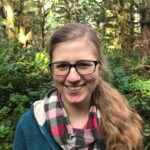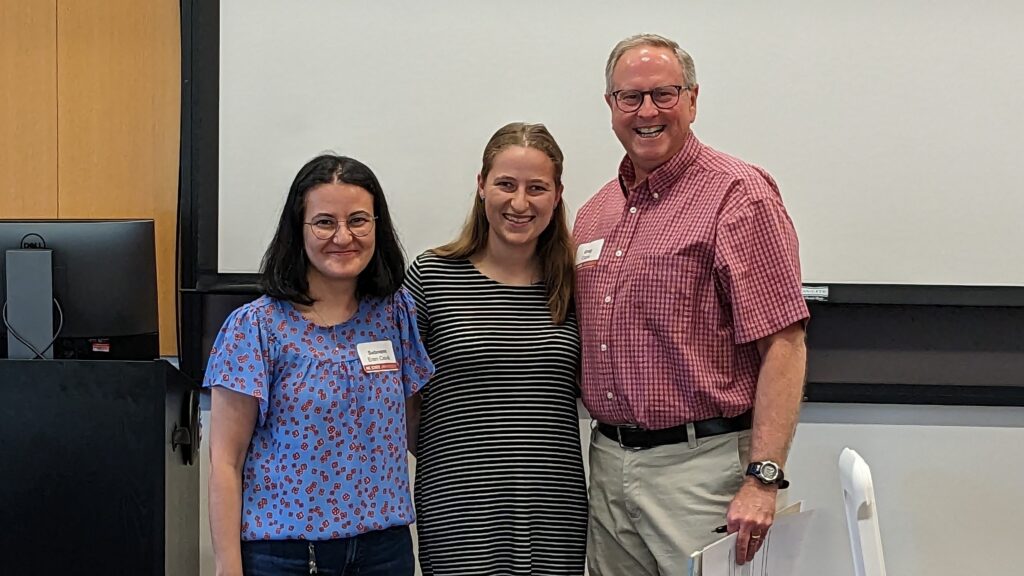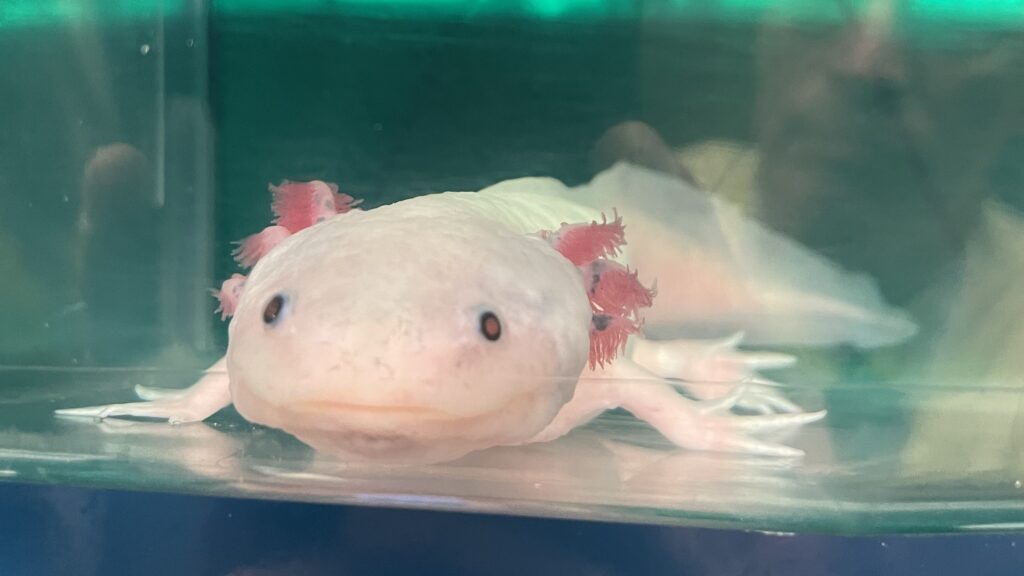Toxicology Fall 2023 Updates
Welcome from the new DGP!
I hope that your Fall semester has got off to a good start. I am honored to officially begin my role as the Director of the Graduate Program. Seth, Gretchen and I have been working together over the summer to facilitate a smooth transition, and I would like to thank them for their ongoing support as I learn the ropes. I’d also like to take a moment to acknowledge Seth for his 5+ years of strong leadership of our Program and for the legacy he leaves behind. Seth spearheaded many new initiatives which have substantially strengthened our Program, including – but by no means limited to – the establishment of our Annual Symposium and the significant growth of professional development opportunities for our students, all while steering us through a pandemic. Seth was also successful in renewing our T32 Training Grant.
In my first year as Director, a major focus will be on further growing our sense of community and enhancing communication. This newsletter serves as a first step in this endeavor. My hope is that a regular newsletter provides an opportunity to learn more about what other members of our Program are doing, celebrate their successes, and make connections. We will issue three newsletters each year. In this inaugural newsletter, we celebrate Stacy Schkoda and Billy Marinello who successfully defended their dissertations this summer, learn about what Scott Belcher and Hannah Starnes have been up to at Woods Hole, and find out about Michael Roe’s discovery of a vector borne disease in the US for the first time, among other items.
We’ll also have regular ‘columns’: Featured Lab and Featured Publication. In this issue, we feature the Yoder Lab and learn about the team’s interests in PFAS and immunotoxicology; and explore a recent publication by Stacy Schkoda and Heather Patisaul linking flame retardant exposure to impaired skeletal structure in rats.
Gretchen and I will conduct a survey to collect news items in advance of each issue, but feel free to email us with news at any time. If students interested in science communication would like to write a piece for future newsletters – either one of our regular columns or a news article of their own – just let me know.
I look forward to working with you and getting started on some new initiatives in the coming months. Please don’t hesitate to reach out if I can help in any way.
Best wishes,
Mike
Meet our 2023 Cohort:






Featured Publication:
Schkoda S, Horman B, Witchey SK, Jannson A, Macari S, Patisaul HB (2023) Skeletal effects following developmental flame-retardant exposure are specific to sex and chemical class in the adult Wistar rat. Front. Toxicol., 5:1216388. Link
First author Stacy Schkoda successfully defended her dissertation in the summer of 2023, and will graduate from the Toxicology Program in December. Senior author Heather Patisaul is Associate Dean for Research in the College of Sciences and a member of the Toxicology Graduate Program faculty.
Firemaster 550 (FM 550) is a commercial flame-retardant used in many household products including carpets, furniture, mattresses and electronics. It is also used in many baby and child products, and consequently exposure is higher and more widespread among children than adults. In cell-based and animal models, FM 550 has been shown to be both obesogenic and endocrine-disrupting. Interestingly, FM 550 promotes adipogenesis in cultured mesenchymal stem cells at the expense of osteogenesis, even when cells are cultured in a pro-osteogenic environment. This raises the possibility that FM 550 might promote adipose development in vivo at the expense of bone development.
In this study, Schkoda et al set out to test whether developmental exposure to FM 550, as well as its constituents – brominated flame-retardant (BFR) and organophosphate ester flame-retardant (OPFR) chemicals – impacted skeletal development using the rat as a model. Dams were orally exposed to 1,000 μg BFR, 1,000 μg OPFR or 2,000 μg FM 550 throughout gestation and lactation. Offspring were scanned by micro-CT at 8 months of age to assess skeletal impacts.
Developmental exposure to FM 550 or its constituents led to sex-specific effects on various measures of bone structure. For example, BFR-exposed females showed significantly decreased bone mineral density of the femur, while this was not the case for males. Females also presented with an increased bone volume fraction following exposure to FM 550 or OPFR.
Overall, the study demonstrates that FM 550 and its constituent chemicals, some of which are used individually in other applications such as personal care products, can impact skeletal development, and demonstrates the critical importance of sex as a biological variable in the response to environmental stress. “Stacy’s work is really unique because there is little to no understanding of how chemicals might impact bone growth or integrity. So her work is breaking new ground,” said her mentor, Dr Heather Patisaul. “That there are sex differences isn’t surprising given that disorders like osteoporosis have a strong sex bias. It will be interesting to see if effects are even more profound in younger animals.”
Featured Lab: Yoder Lab
The Yoder Lab of Comparative Immunology and Immunotoxicology studies mediators of innate immunity. The primary goals of the Lab are to: 1) study the genetic and functional evolution of innate immune receptors; 2) identify novel mediators of innate immunity; and 3) understand the immunotoxicological effects of environmental chemicals.
Recently, the Lab has begun working on PFAS compounds as part of the NC State Superfund Research Program. Through a combination of in vivo studies using zebrafish and in vitro studies using human cell lines and primary cells, the project aims to understand how these compounds impact the innate immune system. The Lab has shown that exposure to PFAS in these systems suppresses the respiratory burst – an important innate immune process induced by neutrophils in response to pathogens. Defects in this system increase susceptibility to infection. Ongoing studies aim to determine how PFAS exposure impacts other aspects of the innate immune system such as macrophage phagocytosis, phagocyte energy utilization and cytokine production.
Meet the Team:

Jeffrey Yoder, PI
As an undergraduate student Jeff studied the processes of mammalian fertilization at the Worcester Foundation for Experimental Biology and graduated from Worcester Polytechnic Institute with a BS in Biotechnology. Jeff’s graduate research focused on DNA methylation and methyltransferase enzymes in mammals and received his PhD in Cell and Developmental Biology from Harvard University’s graduate program in Biological and Biomedical Sciences. He then did a post-doc at the University of South Florida where he started working with zebrafish as an experimental model and he shifted his research focus to comparative immunology. During his post-doc, the Human Genome Project was being completed and Jeff began his ongoing quest to datamine vertebrate genomes for immune gene novelties. Jeff joined the faculty at NC State in 2004 and is a member of the Department of Molecular Biomedical Sciences in the College of Veterinary Medicine. He is excited to apply his knowledge in immunology and functional immune assays to develop medium- to high-throughput screens for assessing the immunotoxicological impact of PFAS and other xenobiotics.

Ashley Connors, Graduate Student in the Toxicology Program
Ashley graduated from Pacific Lutheran University in 2017 with a BS in Biology and Chemistry with a minor in Environmental Studies. After graduating, she worked at Oregon Health & Science University where her research focused on hypothalamic neuronal circuits involved in reproduction and other homeostatic functions. Ashley joined the Toxicology Program in 2020.
Emma Hepworth, Graduate Student in the Toxicology Program
Emma graduated from the College of William & Mary in 2019 with a BS in Biology and a minor in Marine Science. After graduating, she returned to William & Mary to pursue her MS and joined the Hinton Lab where her research focused on protein biochemistry and the role of pseudophosphatases in signaling pathways. Emma received her MS in Biology in 2022, after which she joined the Toxicology Program.

Jacob Driggers, Technician
Jacob graduated from NC State in 2023 with a BS in Microbiology and a minor in Global Health. Throughout his undergraduate career, he worked to develop a high-throughput infection assay using larval zebrafish. He is currently studying the effects of immunotoxins on cytokine production.
Eren Cevik at AAIC


Sebnem Eren Cevik, a PhD candidate in Cathrine Hoyo’s lab, traveled to Amsterdam, Netherlands in July for the Alzheimer’s Association International Conference 2023. In Amsterdam, she presented her work, “DNA methylation of candidate imprint control regions associated with Alzheimer’s disease in Non-Hispanic Blacks and Non-Hispanic Whites.” Sebnem’s travel was supported by the Toxicology Founder’s Award.
ECHO at MBL
As mentioned in our teaser, Hannah Starnes worked as a lab assistant/instructor for the Endocrine-Disrupting Chemicals: Hazards and Opportunities class this past May & June at Woods Hole. Dr. Scott Belcher and Dr. Heather Patisaul are very involved in the teaching of this course. Dr. Belcher encourages anyone interested in the summer program to apply for the 2024 course. It would be a great opportunity to work with some of the best endocrine scientists, policy makers, & regulators from around the world. Plus, axolotls! Axolotls are an important aquatic model of regeneration famously used at MBL. Please reach out to Dr. Belcher for more information on this summer learning opportunity..






